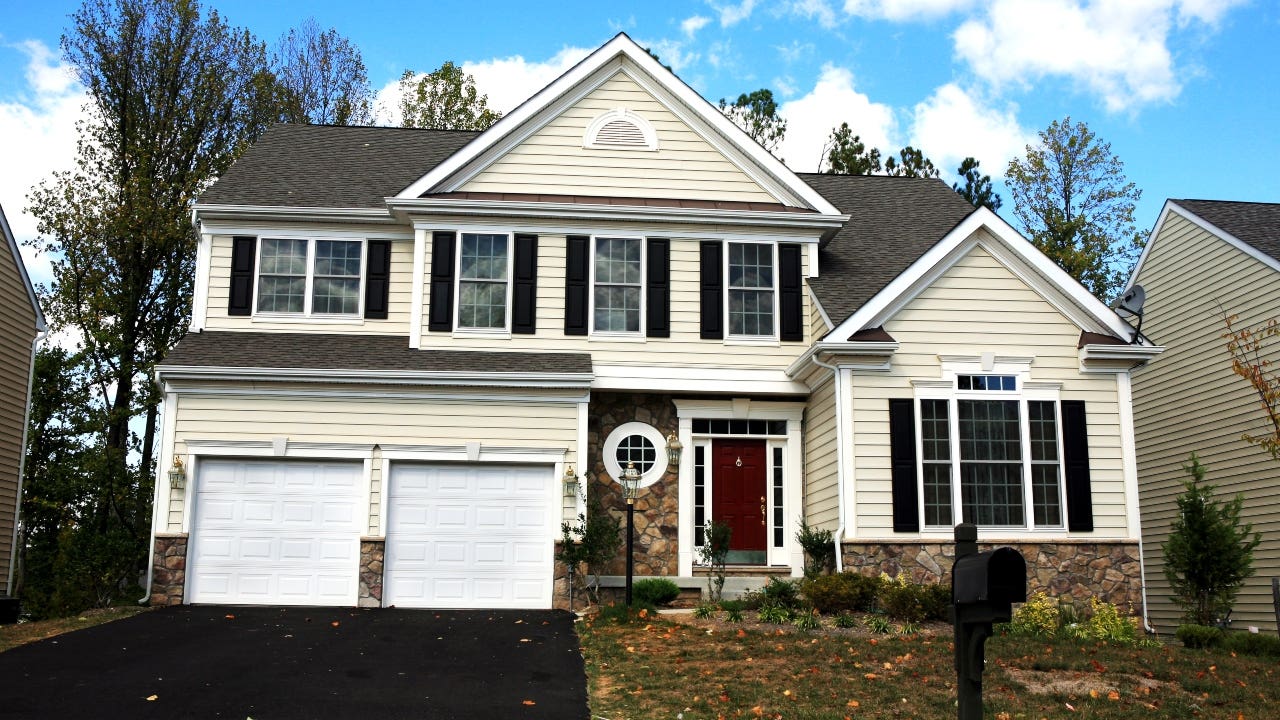Deed of reconveyance: What it is and how it works

The Bankrate promise
At Bankrate we strive to help you make smarter financial decisions. While we adhere to strict , this post may contain references to products from our partners. Here's an explanation for .
Key takeaways
- A deed of reconveyance, also known as a satisfaction of mortgage, is a document that proves you've paid off your mortgage.
- The deed of reconveyance releases the lien the mortgage lender placed on your property.
- You’ll need this document to prove a clear title when you sell your home.
You’d never guess it from the name, but a deed of reconveyance can be a momentous document in your financial life. This type of deed transfers the title to your property from your mortgage lender back to you after you’ve repaid the loan.
What is a deed of reconveyance?
A deed of reconveyance is a document that indicates you’ve fully paid off the mortgage on your home. It represents the transfer of ownership from your mortgage lender to you.
Over the time you repaid your mortgage, you legally owned the property, but the lender held the mortgage lien, or claim, to it. Now that you’ve paid back the loan, the lender needs to remove the lien. To do that, it’ll issue the deed of reconveyance. In California, the deed of reconveyance is known as a full reconveyance form.
“This document is called a mortgage satisfaction or deed of reconveyance depending on the state,” says Megan Hernandez, director of Marketing and Public Relations at the American Land Title Association.
How a deed of reconveyance works
Once you pay off your mortgage, the mortgage lender — also referred to as the “trustee” — creates the deed of reconveyance document. The lender then signs this document and has it notarized.
State laws generally require that the lender provide you with the deed, or submit the documentation to the county recorder, within a certain timeframe. Typically, the document must be provided to you within 30 to 60 days, says Hernandez.
If the lender sends you the document directly, you must submit it to your local recording office.
If you’re selling your home but haven’t paid off your mortgage yet, a deed of reconveyance still impacts the final stage of the closing process: The money from the buyer pays off the rest of the loan, which then triggers issuance of the deed. In this case, the title company typically handles recording it.
“During the lead-up to closing, the title company will reach out to your lender and ask for a payoff statement reflecting everything owed up to the day of closing,” says Hernandez. “At closing, the title company will send the payoff to your lender and proof of that payment to your buyer’s lender.”
What information is included in a deed of reconveyance?
The deed of reconveyance typically includes:
- Name and address of the homeowner/mortgage borrower
- Name of the lender/trustee
- Legal description of the property and parcel number based on the original deed
- Proof that the borrower has fulfilled their obligation to the lender and the property that had been secured by the home loan now belongs to the borrower
- Signatures of the parties involved and a notary stamp
Example of the reconveyance process
Unless you purchase a home entirely with cash, it’s likely that you’ll have a mortgage on the property. Let’s say you take out a mortgage from a lender for $300,000 to buy your home. During the time that you’re repaying that mortgage, the home itself serves as collateral.
However, once you fully repay the mortgage debt, the lender will provide you with a deed of reconveyance. This document is proof that the mortgage has been fully repaid and you are now the full owner of the home.
Why do you need a deed of reconveyance?
When you sell your home, the reconveyance deed is evidence that the property has a clear title, meaning it’s free from any outstanding mortgages or other liens or claims. Without the reconveyance, you could have a harder time selling, because a buyer is going to want evidence that the title is free and clear.
If you aren’t planning to sell, though, a deed of reconveyance is still necessary — it’s proof that you’ve paid off your mortgage, and that prevents a lender from making a claim to the property.
Note that if you have a reconveyance deed, you still have financial obligations as a homeowner, most notably your property taxes.
How long does it take to receive a deed of reconveyance?
The amount of time it takes to get your deed of reconveyance varies by state and by lender. In general, however, it can take up to two months to receive after you’ve fully repaid the loan. Often, there are state laws outlining how long lenders have to provide a deed of reconveyance.
What happens if a deed of reconveyance isn’t recorded?
If the reconveyance hasn’t been recorded, don’t panic just yet.
“The act of paying off all the money owed is what actually extinguishes the mortgage,” says Hernandez. “The recording of the satisfaction is just evidence of the payoff. If a consumer has documentation showing they paid off their mortgage, they don’t need to worry that some lender will come after them.”
If you’re concerned about obtaining the deed of reconveyance, ask your lender about how it handles the loan payoff and deed recording process. Lenders have an incentive to make sure they take care of the deed details, since they can be penalized if the process isn’t handled according to state guidelines. This could mean statutory penalties or even litigation.
FAQ about reconveyance
-
Security interest means a lender has the right to foreclose upon your home if you fail to keep up with mortgage payments. That means, as part of a security interest, the lender can seize the property if you do not meet your obligation to repay the debt. A deed of reconveyance is proof that the property is fully paid for.
-
Yes. A deed of reconveyance is proof that the property is fully paid for and ownership has been transferred to the borrower. The lender no longer has a claim to the property.
-
Once a mortgage is paid off, a lender is required to provide a deed of reconveyance. This would apply even if you pay off the loan early.
-
When you refinance your home, the existing mortgage is paid off by a new mortgage. As part of this process, you’ll get a deed of reconveyance, which serves as proof that the existing mortgage has been repaid.
Related Articles



